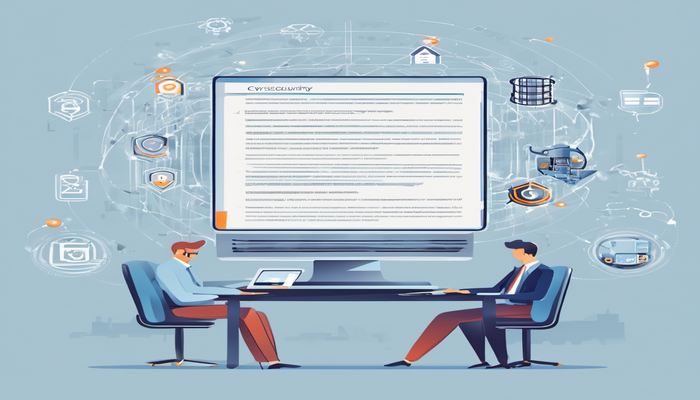In the world of digital security, understanding key terms and concepts is crucial for keeping organizations and individuals safe from ever-evolving online threats. Let’s dive into some fundamental ideas that empower security professionals to identify and tackle potential dangers, all while keeping things simple and easy to grasp.
Playing by the Rules: Compliance Think of compliance as following the rules—both inside and outside the organization. It’s about sticking to the guidelines set internally and meeting external regulations to avoid legal troubles and security breaches. Basically, it’s the digital version of making sure everyone is on the same page.
Fortifying Defenses: Security Architecture Think of security architecture as the blueprint for our digital fortress. It’s a design made up of different tools and processes that work together to shield an organization from risks and outside threats. Picture it as the master plan for keeping the digital castle safe and secure.
Putting up Digital Barriers: Security Controls Security controls are like the guards at the gates of our digital world. They’re safeguards specifically designed to lower the risk of certain security threats. These controls act as the locks and barriers, ensuring that only the right people and processes get through.
Guiding Principles: Security Ethics Security ethics are the guidelines that help us, as security professionals, make the right decisions. It’s like having a moral compass for navigating the digital landscape, ensuring that our actions are appropriate and aligned with ethical standards.
Blueprint for Safety: Security Frameworks Security frameworks are like step-by-step guides for creating plans that keep our data and privacy safe. They’re the instruction manuals that help us build a strong defense against potential risks and threats in the digital world.
Steering the Ship: Security Governance Security governance is the practice of steering and defining the security efforts of an organization. Think of it as the captain guiding the ship, ensuring that everyone is on the right course and contributing to the overall safety of the vessel.
Guarding Personal Information: Privacy Protection Privacy protection is like putting a shield around our personal information. It’s the act of keeping our private data safe from unauthorized use. Just as we lock our doors at home, privacy protection is about safeguarding our digital secrets.
Triad of Security: CIA Triad (Confidentiality, Integrity, Availability) The CIA Triad is a model that helps organizations think about risk in a structured way. It’s like a three-part strategy—confidentiality, integrity, and availability—ensuring that information is kept secret, remains untampered, and is always accessible when needed.
Identifying Potential Dangers: Threats A threat is anything that could cause harm to our digital assets. It’s like recognizing the potential dangers in our environment and taking steps to protect ourselves from them.
ALSO READ
Spotting the Bad Guys: Threat Actors In the world of cybersecurity, a threat actor is like a character in a spy movie—someone who poses a risk to our computer systems, applications, networks, or data. They’re the bad guys we need to watch out for and protect ourselves against.
Watch Your Back: Internal Threats Internal threats are risks that come from within the organization—from employees, vendors, or trusted partners. Sometimes, these threats are accidental, like clicking on a bad email link, while other times, they’re intentional, like someone accessing data they shouldn’t.
Guarding the Gates: Network Security Network security is all about protecting the digital highways and byways of an organization. It’s like having guards at the gates, making sure that only the right people get in and that data and services stay safe.
Cloud Safety: Cloud Security Think of cloud security as protecting your digital stuff up in the virtual sky. It’s making sure that all the things you store in the cloud are set up properly and that only the right people can access them. It’s like having a digital bouncer for your information.
Giving Instructions: Programming Programming is like giving instructions to a computer to make it do what you want. It’s a bit like automation, where you teach the computer to do repetitive tasks, analyze web traffic, and spot anything suspicious. It’s the language computers understand, and it helps us keep things running smoothly in the digital world.
Mastering Tools: Technical Skills Technical skills are like having the know-how to use specific tools and follow procedures. It’s about understanding the digital tools and policies that help us navigate the digital landscape effectively.
So, there you have it—the essential cybersecurity concepts made simple. Just like in the physical world, a little awareness and the right precautions go a long way in keeping our digital spaces safe and secure.

